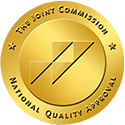The Dopamine-Driven Cycle of Addiction
Addiction occurs when the brain's reward system releases dopamine in response to pleasurable experiences or hyperarousal—a state of heightened physiological and psychological activity. Dopamine is a neurotransmitter that helps sustain interest and attention. For example, when someone experiences hyperarousal while playing video games, their brain associates the activity with dopamine, creating a drive to continue seeking that pleasure. The more the person engages in this activity, the more dopamine is released, intensifying the urge to repeat the behavior. This cycle makes it increasingly difficult to stop, even when the individual knows the behavior can be harmful. This is the process that leads to addiction.

Hyperarousal and Its Contribution to Anxiety
Hyperarousal can be triggered by the intense stimulation and violence found in video games, as the brain processes these virtual scenarios as real, activating the "fight-or-flight" response. When teenagers engage in excessive video game use, their brains can become stuck in a constant state of hyperarousal, which can contribute to anxiety.
Teenagers experiencing hyperarousal may exhibit difficulties in:
- Paying attention
- Managing emotions
- Controlling impulses
- Following directions
- Tolerating frustration
They may also struggle with:
- Expressing compassion and creativity
- Maintaining interest in learning
This can lead to a lack of empathy for others and increased feelings of loneliness, further exacerbating anxiety. Hyperarousal can also manifest physically, contributing to symptoms such as:
- Irritability
- Jittery feelings
- Depression
These physical symptoms can further fuel anxiety in teenagers, creating a vicious cycle that can be difficult to break. The heightened sensitivity to stimuli, emotional dysregulation, and physical discomfort associated with hyperarousal can significantly contribute to teen anxiety.
The Impact of Excessive Gaming on Teen Anxiety
While video games can be a source of entertainment and stress relief for some, excessive use can negatively impact mental health, particularly anxiety levels. Studies have shown a correlation between excessive gaming and heightened anxiety symptoms in children and adolescents.
Here's how excessive video game use can contribute to anxiety:
- Hyperarousal: Action-packed or competitive games activate the body’s "fight-or-flight" response, increasing heart rate, stress hormones, and alertness. Over time, this prolonged state of hyperarousal can make it harder to relax and manage stress.
- Social Isolation: Spending too much time gaming reduces face-to-face social interactions, which can lead to loneliness and a lack of social support—both risk factors for anxiety and depression.
- Sleep Disruption: Late-night gaming often interferes with sleep, and sleep deprivation can worsen anxiety and make handling stress more difficult.
- Fear of Missing Out (FOMO): Multiplayer games create pressure to stay engaged, leading to anxiety about missing events or falling behind other players.
While video games aren’t inherently harmful, excessive use is. Parents can help by setting healthy limits, encouraging a variety of activities, and maintaining open communication about the risks and rewards of gaming.
How Social Media Overuse Affects Teen Anxiety
Social media has its positives, like staying connected with loved ones and sharing information. However, overuse can take a toll on teens' mental health, especially by increasing anxiety. Research highlights a strong connection between heavy social media use and heightened anxiety. Here’s how:
- Social Comparison: Social media often showcases idealized versions of life, where users post only their highlights. Teens, particularly girls, may compare themselves to unrealistic standards of beauty, success, and happiness, leading to feelings of inadequacy, low self-esteem, and heightened anxiety.
- Fear of Missing Out (FOMO): Constant updates about events and activities on social media can trigger FOMO, pushing teens to stay glued to their devices. This cycle of comparison and constant connection can lead to restlessness and anxiety.
- Cyberbullying and Harassment: Social media can be a breeding ground for cyberbullying and negative interactions. Hurtful comments, rumors, or threats can cause anxiety, depression, and isolation.
- Sleep Disruption: Late-night scrolling and exposure to blue light can interfere with sleep, disrupting melatonin production. Sleep deprivation worsens anxiety and reduces the ability to handle daily stress.
Parents can support teens by encouraging balanced social media use, modeling healthy tech habits, and talking openly about its impact on mental health.
Signs That Technology is Affecting Someone’s Mental Health
Excessive screen time can lead to difficulty in:
- Paying attention
- Managing emotions
- Controlling impulses
- Following directions
- Tolerating frustration
Physical symptoms
Physical symptoms may include irritability, jittery feelings, and depression
Teens may struggle with:
- Expressing compassion and creativity
- A decreased interest in learning
- Engaging in real-life social interactions
- Experiencing loneliness
Heavy social media use increases the risk of anxiety and depression due to:
- Comparing themselves unfavorably to peers
- Feelings of inadequacy
Neglect of important aspects of life, such as:
- Appearance
- Work
- School
- Relationships
Signs of screen addiction include:
- Lying about the extent of screen use
- Intense urges for more screen time that block out other thoughts
- Needing increasing amounts of screen time to feel satisfied
- Irritability, anxiety, or anger when forced to stop
Healthy vs. Unhealthy Screen Time:
- Healthy technology use involves balancing screen time with other activities
- Active screen time (e.g., interaction, cognitive engagement, physical activity) can be beneficial
- Passive screen time (e.g., scrolling through social media, or watching videos) is less beneficial
Is it normal teenage behavior or is it something else? These assessments may help you know how much your teen's and family's life are being affected by anxiety.
How Tech Addiction Treatment at WayPoint Academy Helps Teens Manage Anxiety
Addressing the Root Cause of Anxiety
WayPoint Academy believes that in order to treat anxiety effectively, it is important to first understand what is causing it. Technology overuse and addiction can increase anxiety to the point where treatment is needed. WayPoint's tech addiction treatment focuses on addressing these underlying issues, so when the root cause is treated, the anxiety often becomes manageable or disappears.
A Safe and Supportive Environment for Managing Tech Addiction and Anxiety
WayPoint recognizes that environmental factors, such as peer pressure, trauma, social media, and technology, can also contribute to anxiety disorders in teens. As part of its tech addiction treatment program, WayPoint provides 24/7 care and support in a secluded and focused environment that eliminates everyday triggers and stressors, allowing teens to gradually confront their fears in less overwhelming settings.
Specializing in Anxiety and Tech Addiction Treatment
WayPoint Academy utilizes a highly specialized, therapeutic approach to treating teens whose lives have been overtaken by anxiety, including those affected by tech addiction. The essence of WayPoint’s specialized psychotherapeutic approach is finding the right anxiety treatment model for each individual student and matching it with the right intervention. WayPoint’s treatment programs are designed to provide therapeutic assignments and tasks that increase distress tolerance and emotional resiliency in teens with all types of anxiety, including anxiety related to tech addiction.
To get started, call 435-562-5800 or email [email protected]. We're here to listen, answer your questions, and provide the support your family deserves.

Backed by The Joint Commission which ensures programs adhere to the highest quality of clinical and medical practices.

Designated as a NATSAP Research Program, showing our commitment to well-researched practices in our program.

Full member of the National Association of Therapeutic Schools and Programs (NATSAP), which ensures regulation of programs that serve children and adolescents.

This program is proud to be Cognia Accredited. Cognia provides accreditation to schools that have earned recognition for their reputation and high educational standards.

WayPoint Academy is fully licensed in the state of Utah.

Waypoint Academy is a certified Student and Exchange Visitor Program (SEVP), allowing us to welcome and support international students.

Full Member of the International OCD Foundation, which ensures our staff has access to the most up-to-date OCD treatment practices and research.

Founding member of Choose Mental Health, guiding families with questions about mental health.
Sources
- The Prevalence of Video Game Addiction and Its Relation to Anxiety, Depression, and Attention Deficit Hyperactivity Disorder (ADHD) in Children and Adolescents in Saudi Arabia: A Cross-Sectional Study
- Is Internet Addiction Real? - Child Mind Institute
- Video games and screen addiction - Mayo Clinic Health System

